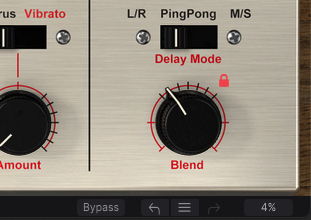Arturia’s FX Collection 2 is insanely addictive; here’s John Selway to show us some of the tricks for using this on your techno drums (and a few more tips, too).
Okay, a confession: I’m using FX Collection 2 on sort of everything. I almost don’t want to share it.
John of 343 Labs has some really lovely tips here on how to get great results on techno drums, which really is applicable to any number of styles. You’ll hear some particularly gorgeous dub and flanger effects on the top-notch Space Echo emulation – so if you weren’t already making dub techno, you might just start, and that’s something I’m glad to bring back.
Here’s a summary, if like me you enjoy reading and having everything at a glance. He demos, plus my own take on this:

EQ SITRAL-295 shapes the kick (Sweet Bassdrum, actually was also toying with this preset… nice for cleaning up the kicks a bit, a bit more sub punch and brightening the highs).
SITRAL-295’s digital spectrum analyzer is also useful.
Comp VCA-65 for saturation and attack emphasis.
Flanger BL-20 for… well, the clue is in the name. Really love this flanger.
Pre 1973 for overdrive.
Delay ETERNITY (yeah, and don’t forget the bitcrusher in there, too), which he uses just for its resolution characteristic.
Bus FORCE which he uses on the bus for creative use and dirt. (I actually use this not as intended, too – not only on the bus, but also on individual channels for distortion and sound shaping and so on.)
I’m not sure what this phrase “too much” he’s using is about, but then I get a little industrial late at night.
Delay TAPE-201 he uses for flanging effects, too.
And I agree, this thing sounds really good even with lots of other options – the kind of accurate emulation that at one point required dedicated DSP hardware (cough). It’s just beautiful being able to pop tons of these on my fast Intel PC and speedy, fan-never-comes-on M1 Mac (even without native versions).
In general, check out Advanced settings in each for extra modulation, envelope followers, and more. It gets really heavy in Rev INTENSITY, but you’ll find goodies throughout the collection. Without diving in there, Arturia’s offerings here might seem like some other stuff on the market, but as you get into their modern additions, the competition narrows.

There are a lot of emulated distortions in the FX Collection that you can use for their own character. Arturia has been gradually adding more presets, too, so they’re harder to miss. For instance, you might add compressors or pres for character. The Delay TAPE-201 is now desirable even just for its emulation of both the Roland and Germanium preamps – enough so that you might dial the echo and reverb to 0 and just run a signal through the distortion.
I’m going to defend Arturia’s emulated UIs. You can scale them to a more sensible size – that’s the main thing, to tailor them to your screen. I find them pretty easy to work with. Somehow it’s nice psychologically to have some different stuff to look at. There are plenty of other fresh ideas in UIs, too, which I can cover separately. But while I’m sure I should feel bad about using those skeuomorphic fake panels, I don’t. Plus for contrast, there’s stuff like BABY Audio’s utterly genius Spaced Out which has a completely digital design from the ground up and is totally different to work with than the faux Space Echo here, even if they share the same inspiration in part.


It’s great stuff all around. I do actually strongly encourage not just going crazy with the toys, but also spending some quality time with an individual plug-in and understanding its controls. There are a lot of original and creative approaches with this stuff that can be oodles of fun. And I don’t feel bad at all about quality time “in the box” as it were.
https://www.arturia.com/products/software-effects/fx-collection/overview#en